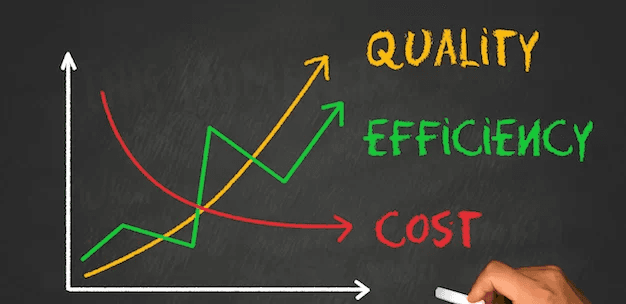These tools and services can help companies get their arms around spiraling cloud bills.

The more workloads that you migrate to the cloud, the more difficult it becomes to predict monthly cloud costs. Cloud services vendors such as AWS, Google and Microsoft can help organizations avoid capital costs for new hardware, but that doesn’t necessarily mean that you have made the most cost-effective decisions about the particular services that these and other cloud vendors offer.
And while it is great that you’re only paying for the services you need, trying to parse your monthly bill requires the skills of a CPA, a software engineer, a commodities trader and a sharp eye for the details.
That’s because some cloud resources, such as high-performance, multiple-CPU instances and high-volume storage repositories, run up the meter pretty quickly. Also, prices change frequently, either because vendors are constantly lowering their fees to stay competitive, or have muddied the waters with specials on future resource consumption that reward advance planning called reserve instances.
Some vendors offer gimmicks to get your data by not charging for inbound or outbound data transfers. To make matters even more complicated, as the vendors bring up new cloud services, understanding the pricing implications of choosing one type of service over another can be daunting.
Finally, a virtual instance of a CPU or a hard drive isn’t necessarily the same across providers, which makes comparison shopping almost impossible.
The good news is that there are many tools and services designed to help organizations manage and optimize cloud costs.
Why should companies use cloud management tools?
There are several reasons to consider using these tools and services. You might be in the market to switch to a new provider in order to add features or because you aren’t happy with your provider’s downtime or level of customer support.
You might want to have better insights into your cloud costs by staying on top of pricing changes or better scheduling of your reserve instances to match the best pricing tiers. This is where the commodity trading skill comes in handy.
Cost analysis is just one part of cloud instance optimization, which should be a continuous process. This is because pricing is so dynamic and the various resources are tightly connected in ways that might not be immediately obvious.
Vendors that offer this service have very sophisticated optimization routines. The right tool can also help to identify mismanaged instances or align the size of your instance with your particular needs as you scale up or down.
Finally, you might want to explore instances that could be more cost or performance effective.
Ironically, figuring out the cost of a tool or service designed to help you figure out cloud costs can itself be somewhat confusing. Some of the vendors have very transparent and public pricing pages, others will allow you to review their rate sheets only after you have signed up, and some go so far as to make it clear you will only get the “free” tier access once you have registered and set yourself up for an onslaught of marketing calls and emails.
This growing market segment has many players. Here is a sampling of vendors that fall into the three major categories of cloud cost management offerings.

1. AWS-only tools, both native and third-party
AWS has numerous tools of its own to help you understand your monthly cloud bill and predict your future cloud costs.
These include:
AWS Cost Explorer is the grandaddy of costing analysis portals and has plenty of data – you just have to wade through it all to figure it out.
Cost and Usage Report explains what these monthly reports are and how to make sense of them.
AWS Cost Anomaly Detection helps you spot odd spending patterns.
Other tools that provide optimization recommendations include AWS Trusted Advisor, AWS CloudWatch, Cloudtrail, and S3 Analytics.
Qualys’ TotalCloud is a third-party tool specifically for AWS. There’s a 15-day free trial along with a forever free plan if your monthly bill is less than $5,000. Otherwise, plans start at $49/mo. TotalCloud has hundreds of pre-defined templates that can be used to automate and optimize various AWS tasks, such as automatically terminating unused instances or detecting anomalies.
2. Multi-cloud comparison tools
Most enterprises of any size use multiple cloud providers, so you’ll want to explore these tools. They either go wide, covering multiple vendors, or deep, covering many services of a particular vendor.
In many cases, capabilities are limited once you get beyond the more familiar cloud services such as CPU, disk and memory. Some have free trials, which you should definitely try before paying anything. Here are some examples:
Apptio Cloudability offers reserve instance planners and right-sizing analysis. Apptio bought Cloudability in 2019 and has other optimization tools in its portfolio. For Cloudability, there is a 30-day free trial (with detailed registration and potential sales exposure) and then it will cost $499/mo.
CloudBolt has two different offerings (a cloud management platform and a costing optimization tool, which supports the big three and VMware). Free trials require registration and potential sales lead exposure. No pricing is available.
Cloudorado.com compares 11 cloud server, compute and storage providers (including the big three) and normalizes CPU with AWS’s ECU as a way to compare CPU power across the service providers. You set your parameters for RAM, storage, CPU and OS types and it shows you the total monthly cost and you can drill down into details on each provider. There’s a nice balance between giving you enough information and a broad field of providers, so it is a good starting place as long as you are interested in one of the providers analyzed. The service is free (vendors pay to be listed) and it is up to you to optimize your own spends and to get your parameters accurately stated.
CloudHarmony.com offers a directory of more than 100 providers. However, it just shows basics of each one (along with uptime stats from Panopta, which is an independent way to examine the vendor’s promises and claims) with no costing info. If you are open to try one of the lesser-known providers, this is a good place to at least get acquainted with what each has to offer.
Densify has a variety of resource optimization tools, along with PaaS costing for the big three plus VMware, Openshift and Kubernetes. There are free (requiring registration) trials, but no public pricing. There is also a page describing the configuration requirements to run their tools.
GorillaStack Cost Optimization Tool, targeted at AWS and Azure, is priced on your overall cloud spend, starting at $50/mo.
Harness covers the big three, as well as Kubernetes. It has a lot more than costing features and is designed to be used in continuous software delivery environments. There is both an open source and a forever free plan (for up to five services). Paid plans start at $100 per service per month for up to 100 services, and an unlimited plan with a free 14-day trial.
Komiser covers IBM’s cloud and others. There are free and paid plans starting from $169/mo.
NetApp has several different tools for the big three, including Spot.io and CloudCheckr that are part of its larger analysis platform.
ParkMyCloud has been acquired by IBM. It also covers Alibaba’s Cloud. No pricing is available.
Virtana Cloud Cost Management used to be called Metricly CloudWisdom. It covers AWS and Azure only, there is a forever free trial for a single resource, otherwise $5/device/mo. Given this price point, this could be a good starting place for smaller cloud installations or to experiment with the genre.
VMware CloudHealth covers the big three, but you have to run separate tools for each provider, which somewhat defeats the comparison purpose. VMware bought CloudHealth in 2018.
3. About TechX Corp.
TechX Corporation is “AWS Partner of the Year” 2021 – 2022 in Vietnam.
TechX Corporation is a young startup, founded in 2020 by a team of well-established technology experts, with years of experience in multi-national enterprises and VN30 corporations with the mission of supporting Vietnamese companies in their digital transformation journey. TechX’s team of cloud experts possesses a comprehensive insight of Vietnam market, especially in major industry such as banking and finance, technology, E-commerce, etc.
Became AWS Advance Consulting Partner in less than 1 year since its establishment, TechX has been leveraging AWS advance cloud services and technology to provide tailored cloud transformation solutions our customers. Currently, TechX Corp. proud to be cloud consulting partner to top banks and financial institutes in Vietnam, such as Maritime Bank (MSB), Vietnam International Bank (VIB), VietinBank, FE Credit, etc., and many other companies in different industries.
